Madame de Sévigné settles again in her Castle of Grignan
5 min read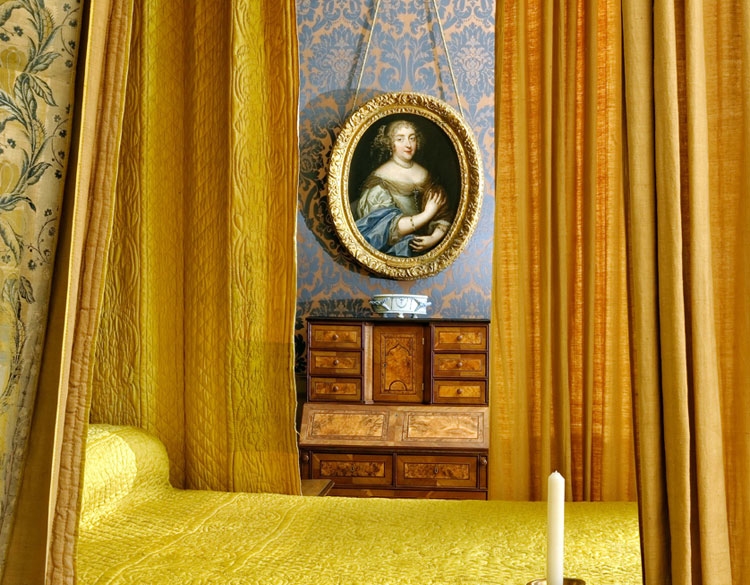
The Château de Grignan, also called the “Versailles of the Drôme” offers a retrospective on one of its more famous ambassadors Marie de Rabutin, better known under the title of Marquise de Sévigné. By AP
She was a celebrated woman of letters, acclaimed by the publication of her Correspondances which gave to this locality, riveted on the heights of the colored Drôme Provençale, this literary influence relayed more recently by the poet Philippe Jaccottet, first integrated author, during his living, to the illustrious La Pléiade collection.
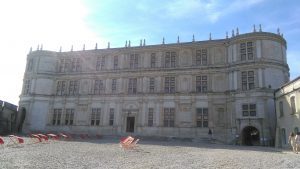
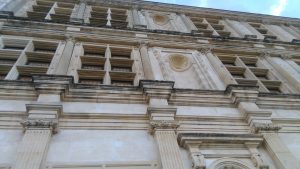
View of the façade of the Château, style “François 1er”, built in the middle of the 16th century by Louis Adhémar, completed in the 17th century by niches with shells and fire pots on the roof, restored during the years 1913-1931 (Credits photos: Alex Plato).
From May 25 to October 22, 2017, this temporary exhibition, a first one for the “royal castle”, highlights the rich history of the past occupation of the place, although she remained there only four years along three long sojourns. Her mark remained fixed in this area, where lived her daughter Françoise-Marguerite, with whom she maintained a strong correspondence. She was also married with François de Castellane-Adhémar, governor of Provence and representative of King Louis XIV, during 45 years.
Indeed, the woman of letters was also a great traveler, crisscrossing France (including Provence, Brittany and Burgundy) by all possible means of the time (coach, litter, chair with carrier or boat on the “terrible Rhône river”) in the context of friendship, business or convenience or even health stays in Vichy. Paris-Grignan needed a fortnight and connecting Brittany to Grignan almost three weeks, marking her attachment to these Provencal lands that she called from then on her “real” country.

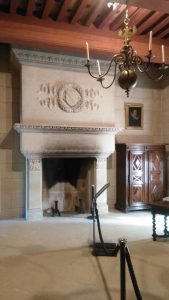
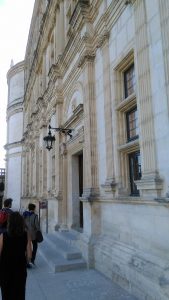
Castle Entrance (Photos Credits: Alex Plato)
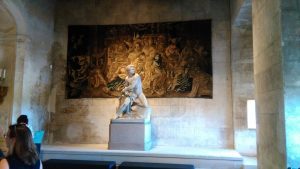
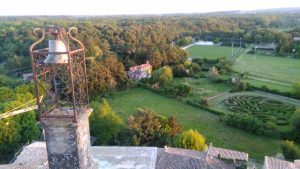
Vestibule of the Castle and a view of the Drôme Provençale (Photo credits: Alex Plato)
Few exhibitions have been so far devoted to this Marquise keen on letters and even more so in her stronghold, including those of Madame de Sévigné’s Provençaux that took place at the Cantini Museum in Marseille in 1973 simply entitled “Madame de Sévigné “at the Carnavalet Museum in 1996.
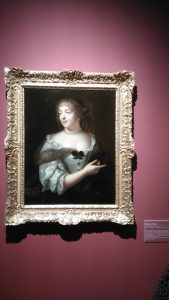
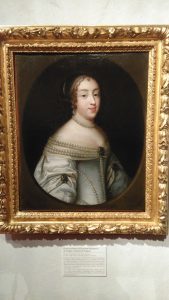
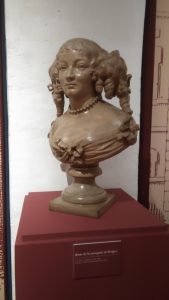
Portraits of Madame de Sévigné, her daughter Françoise-Marguerite and the sculpted bust of Madame de Sévigné (Photo credits: Alex Plato)
Although having contributed to the architecture of the castle as well as the Adhémar family, the Marquise contributed to its international influence thanks to its art of correspondence.
Chrystèle Burgard, leading to the qualification of this epistolary exhibition with the Marquise de Sévigné is a strong exhibition of a preparatory period of 2 years and supported by a scientific committee, is it necessary to publish its despite the refusal to be, despite the refusal to be in the hands of everyone, even if the volume of its correspondence and those of its various natures Private, business, health) including more than a thousand letters published thanks to his cousin Roger de Bussy-Rabutin and his granddaughter Pauline de Simiane, the subject of his initial wishes.
At the mercy of her many daily correspondences stamped with gallant banter and worldly chronicles and the political life of her time, Madame de Sévigné developed a “natural style” overriding conventions and the words “trotting the feathers as they want”.
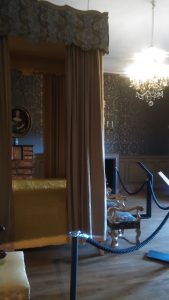


View of Madame de Sévigné’s bedroom and the view that inspired so much for her writings on her scriban, as well as a scene restored from a vintage dining table (Photo credits: Alex Plato)

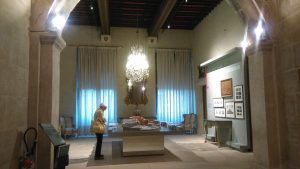
Ceilings in honor of the Adhémar dynasty and a course of imprints of modernity (Photo credits: Alex Plato)
A team complemented by the Régie des Châteaux of the Drôme for the search for financing particularly rich in patronage.
An atmosphere that gives a welcome to an event of this kind, backed by the Festival of Correspondence whose next edition will take place from 04 to 08 July 2017 on the theme “Dear Families …”, to celebrate the art of writing, of all eras and in all its forms, from the most traditional to the most contemporary.
Numerous loans of pieces and others from some thirty collections sometimes sorted out of reserves come to decorate the exhibition, whether it is the Shoe Museum or the Musée Carnavalet.

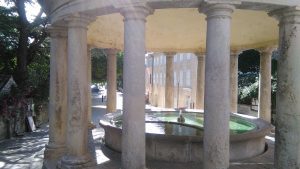
View on the peaks of the “silver terraces” of the Castle (dating from the 16th-17th centuries) and the old neoclassical washhouse of the village of Grignan, in the likeness of the round temples of antiquity and inspired by the temple of the Love of the little Trianon at Versailles (Photo credits: Alex Plato).
An exhibition based on four sequences designed by Jérôme Dumoux, highlighting, through his installations imprinted with Mediterranean colors, works that are sometimes very austere, evoking the interiors of 17th century mansions, like this table scene of the Marquise’s meals.
The whole retracing a biographical journey starting from Vitré, passing through Paris and its immutable society (where she practiced the art of conversation in the salons of Rambouillet and Nevers Hotels in particular), as well as her life experience marking her correspondences to Grignan in particular spreading about his lifestyle at the castle, a real city in the city in his time! Indeed, not far from 100 people could reside there including about fifty servants and many guests of passages, thus wishing to revive the golds of its prosperous youth near the court of Versailles and its royal festivals where the Marquise frequented the greats of this World (Superintendent Fouquet, Grand Condé, Cardinal de Retz), while wishing “to be of all pleasures”.
The epistolary journey ending with a film, made by a company from Valencia, putting letters from the Marquise in reading.
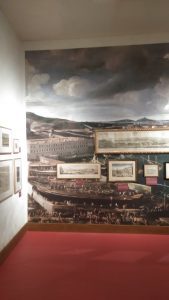

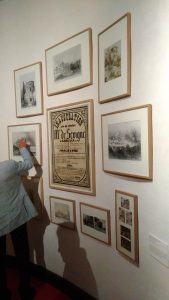
An overview of the scenography of Jérôme Dumoux including these medical elements of the time (Photo credits: Alex Plato)
In addition, the 32nd Grignan Nocturnal Festival with a unique concept in France of more than 40 theatrical performances in a row (of 800 spectators each evening) whose 2017 edition proposes the work of Alfred de Musset “Lorenzaccio” , a cross between the theater of the bodies with Marie-Claude Pietragalla and the theater of words incarnated by Daniel Mesguisch, from June 21 to August 19, 2017 which will be played outdoors in front of the Renaissance facade of the castle of Grignan.
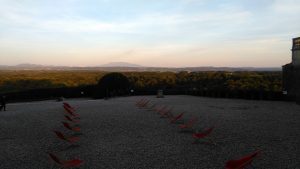

View of the theatrical scene located in the courtyard and view down to the Saint-Sauveur abbey, partly destroyed during the wars of Religion and including the tombs of Madame de Sevigné and the ones of the Adhémar, located in the crypt chorus (Photo credits: Alex Plato).
Thus, every year since 1976, the place is given to a play of majority of classic obedience which represents a real challenge for the actors as well in the acoustic point of view (since in the open air) that endurance since each evening is a real performance at the same time physical for the comedian that artistic with a plate of an opening of 16 meters and 9,40 meters of depth with a excellence of the text to be put on by 11 actors occupying this large stage often bathed by the strong winds of the Midi (Provence).
https://www.instagram.com/p/BarNCsrlNJx/?taken-by=francevisiting


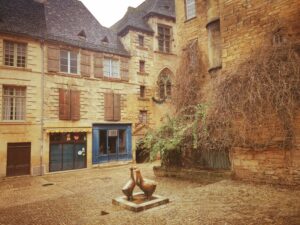
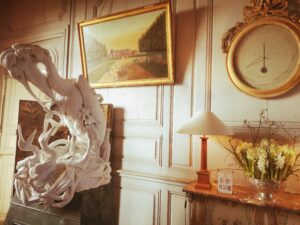



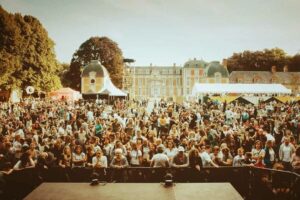

keep up the excellent work , I read few blog posts on this site and I believe that your weblog is real interesting and contains circles of great info .